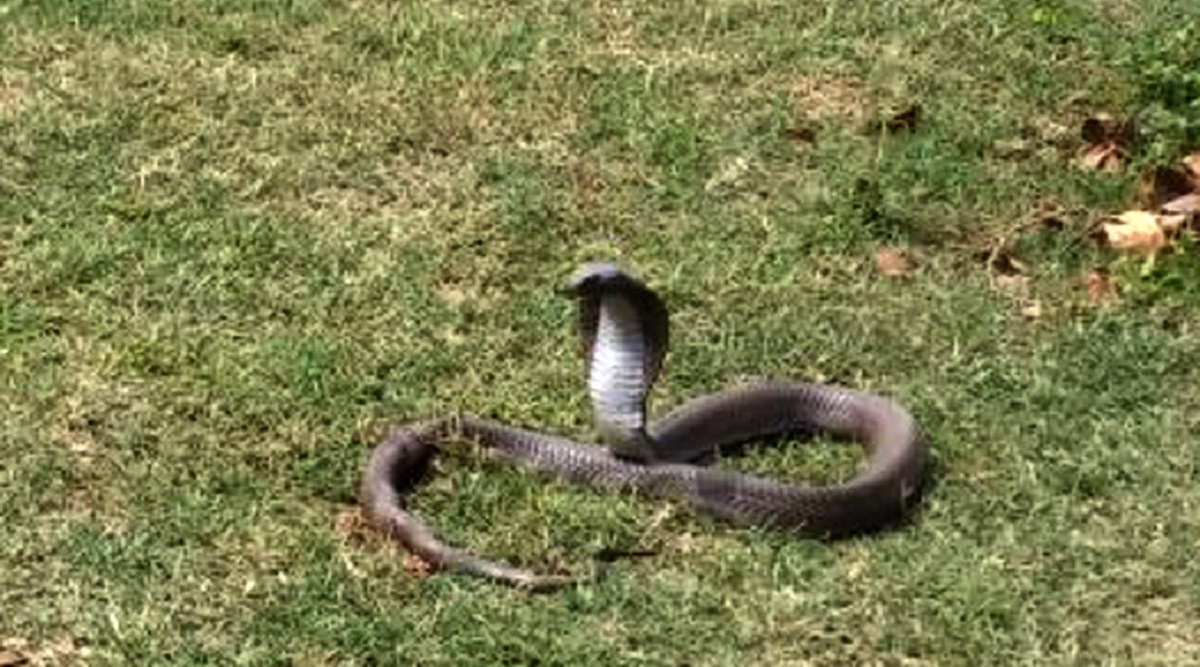📣 For more lifestyle news, click here to join our WhatsApp Channel and also follow us on Instagram
Premium
King cobra vs other cobras: Find out the differences in size, venom potency, diet, and behaviour
While the king cobra shares similarities with other cobras, its massive size, diet, intelligence, and nest-building set it apart.
 King cobra vs. other cobras: How do they compare in size, venom strength, diet, and behavior? Discover what makes the king cobra the longest venomous snake and why it differs from true cobras. (Source: Freepik)
King cobra vs. other cobras: How do they compare in size, venom strength, diet, and behavior? Discover what makes the king cobra the longest venomous snake and why it differs from true cobras. (Source: Freepik)The king cobra (Ophiophagus hannah) is often mistaken for other cobras, but it stands apart in multiple ways. Despite its name, it isn’t a “true cobra” (genus Naja) but belongs to a different genus altogether. So, what makes the king cobra unique compared to other cobras?
Let’s break down the differences in size, venom potency, diet, and behaviour.
1. Size: The Longest Venomous Snake
King Cobra
- Largest venomous snake in the world – grows up to 18 feet (5.5 meters).
- Males are generally larger than females.
- Known for its regal hood and distinct head shape, which differs from other cobras.
Other Cobras (Genus Naja)
- Generally smaller, averaging 4 to 8 feet (1.2 to 2.5 meters).
- Some larger species, like the forest cobra (Naja melanoleuca), can reach 10 feet (3 meters), but none rival the king cobra in length.
2. Venom: Strength vs. Quantity
King Cobra
- Less toxic venom than many other cobras but injects a much higher volume.
- Neurotoxic venom attacks the nervous system, leading to paralysis and respiratory failure.
- Can deliver 7 milliliters of venom per bite, enough to kill an elephant or 20 humans.
- Victims can die within 30 minutes if untreated.
 While the king cobra shares similarities with other cobras, its massive size, diet, intelligence, and nest-building set it apart. (Representational image)
While the king cobra shares similarities with other cobras, its massive size, diet, intelligence, and nest-building set it apart. (Representational image)
Other Cobras
- Generally have more potent venom per milliliter than king cobras.
- The Indian cobra (Naja naja) and Cape cobra (Naja nivea) have venom that is 2 to 3 times more toxic than a king cobra’s.
- Some species, like the spitting cobras, can project venom up to 8 feet (2.5 meters) to blind predators.
3. Diet: The Snake-Eating Snake
King Cobra
- Specialized in eating other snakes (ophiophagy), including venomous species like kraits and other cobras.
- Occasionally preys on lizards, rodents, and birds, but prefers snakes.
Other Cobras
- Have a more varied diet, consuming frogs, rodents, lizards, and birds.
- Some, like the monocled cobra (Naja kaouthia), hunt near human settlements due to their preference for rodents.
4. Key Behavioural Differences
King Cobra
- Highly intelligent and known for its unique nest-building behavior—the only snake species that guards its eggs.
- More cautious and shy, avoiding confrontation unless provoked.
- Stands one-third of its body height when threatened, often towering over humans.
- Hood is narrower and elongated compared to true cobras.
Other Cobras
- More aggressive and defensive; some readily spit venom.
- Do not guard their eggs—most species lay eggs and leave them unattended.
- Typically have wider hoods and more distinct markings than the king cobra.
While the king cobra shares similarities with other cobras, its massive size, diet, intelligence, and nest-building set it apart. Its venom strategy differs from true cobras—while not the most toxic, it injects lethal volumes. In the world of cobras, the king cobra truly lives up to its name.
📣 For more lifestyle news, click here to join our WhatsApp Channel and also follow us on Instagram
© IE Online Media Services Pvt Ltd
Advertisement
More Lifestyle
Advertisement
PHOTOS
Must Read
Advertisement
Buzzing Now
- 01
- 02
- 03
- 04
- 05
Advertisement



























